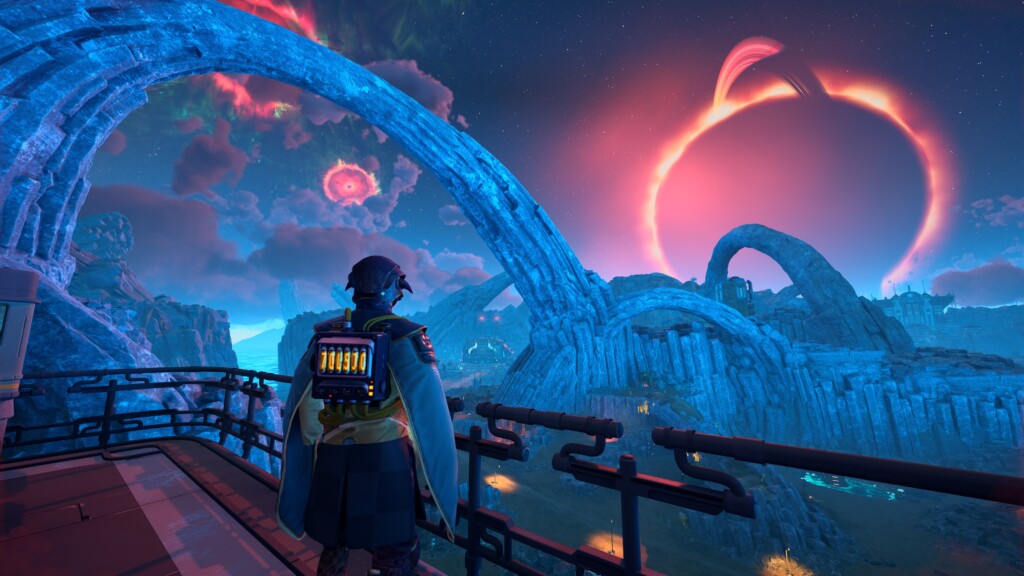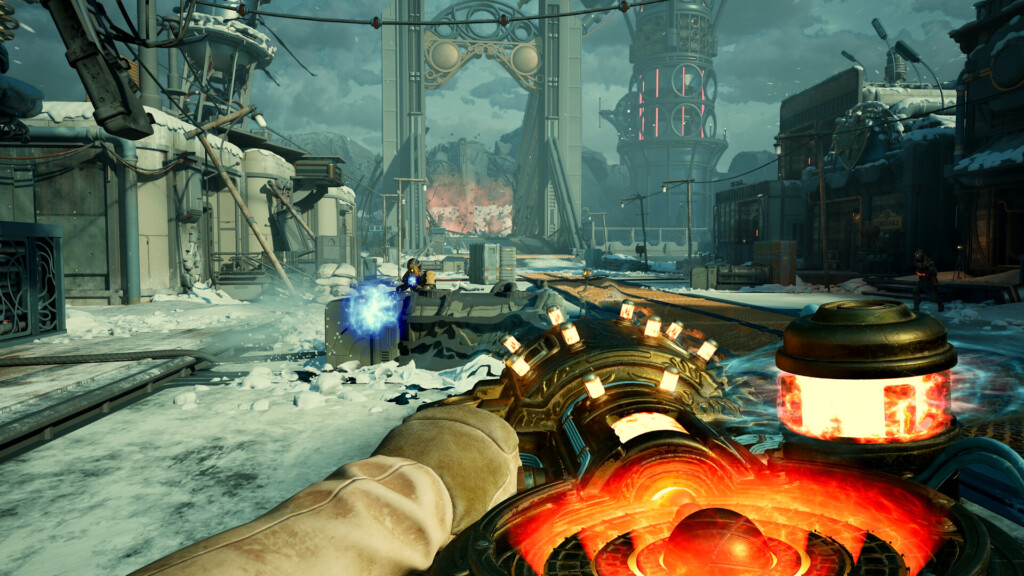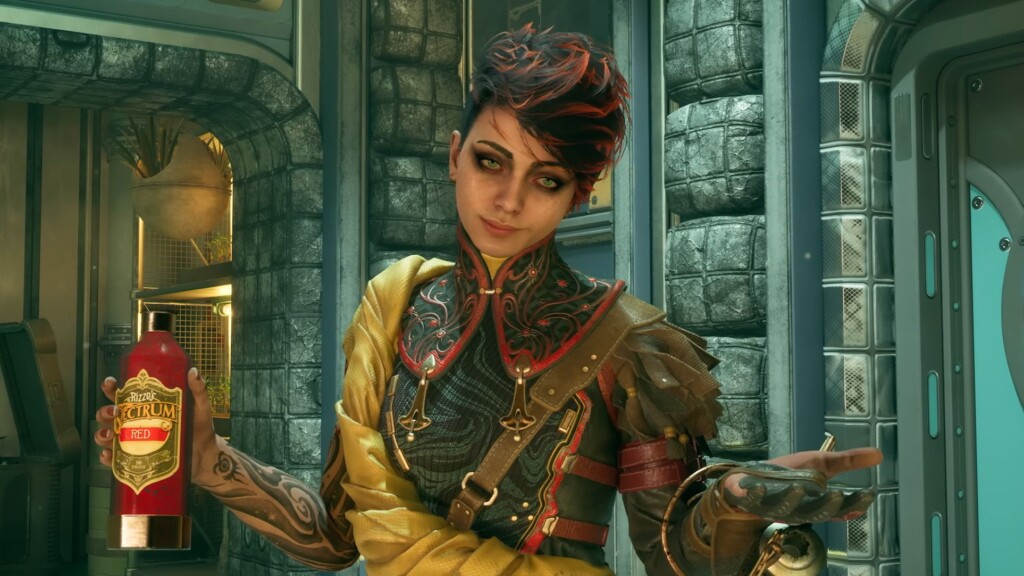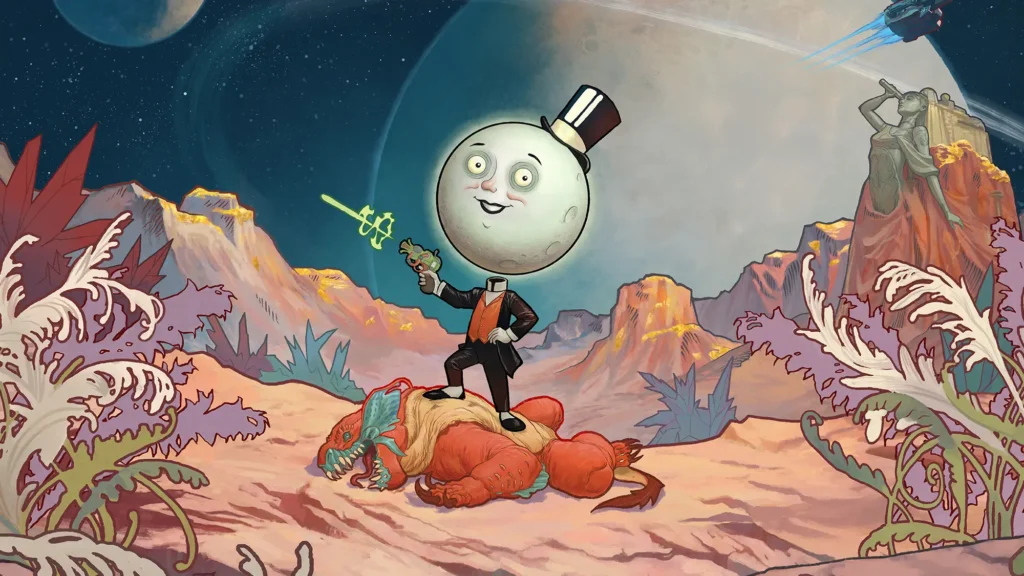Obsidian is back with The Outer Worlds 2, and after spending a few days in its sarcastic sci-fi universe, I can confidently say it’s one of the boldest RPG sequels in recent memory. It’s bigger, darker, and much stranger than the original—but it’s also very much an Obsidian game, full of sharp writing, mechanical freedom, and a lingering sense that everything could go wrong at any time.
A Universe That’s Gone Colder
While the first game’s Halcyon system had a pulpy, tongue-in-cheek energy, The Outer Worlds 2 opens on a tone that’s more mature and almost melancholic. The sense of corporate satire is still there, but this time it’s sharpened into something more biting. Every faction feels more entrenched, every decision heavier. Exploration is still colorful and lively, but there’s an undercurrent of cynicism that fits the times—and the story benefits from it.

The new star system is sprawling, with more open environments and a greater emphasis on verticality. Gone are the self-contained hub maps; instead, Obsidian has given players a more cohesive space to explore. Walking through its cities, I felt the scale of its decay—the kind of quiet desperation you only get from a world that knows it’s past saving.
Combat That Rewards Experimentation
The original Outer Worlds had solid combat but rarely surprised. The sequel, however, plays with its mechanics in meaningful ways. The time dilation system returns, now more flexible and tied to new perk trees. Each weapon class feels distinct, and some of the new science weapons genuinely change how you approach encounters—one in particular lets you phase through enemies to flank them. The AI still isn’t brilliant, but the overall pacing of fights is tighter, faster, and much more varied.

Companions play a bigger role in combat as well, with AI improvements and customizable synergy abilities. Pairing certain characters can unlock combo attacks or tactical advantages, rewarding players who pay attention to personalities as much as stats. It makes the party feel less like a collection of quest dispensers and more like an actual crew.
Choice Still Matters (And Hurts)
The beating heart of any Obsidian RPG is choice, and The Outer Worlds 2 leans all the way in. Moral dilemmas hit harder here, not just because of the writing but because of how the game reacts. Consequences play out more slowly, sometimes several quests later, and they sting. I had one moment where a small act of mercy came back to haunt me hours afterward—and it felt perfectly in character for this world.

Dialogue remains razor-sharp, alternating between biting corporate humor and moments of genuine vulnerability. Obsidian continues to excel at writing flawed, believable people who reflect the chaos around them. It’s a rare RPG that can make you laugh at dystopia one minute and quietly question your own decisions the next.
Rough Edges, But Worth It
Not everything clicks perfectly. The technical performance can stutter during large combat sequences, and some facial animations fall into the uncanny valley. Still, nothing so far has pulled me out of the experience for long. Obsidian’s games have always carried a little roughness around the edges, but in The Outer Worlds 2, that texture feels authentic—part of the studio’s charm rather than a distraction.
A Promising Journey Ahead
If these early hours are any indication, The Outer Worlds 2 is shaping up to be one of the standout RPGs of 2025. It’s ambitious, strange, and often bleak, but it never loses sight of the human stories that give the satire its weight. The universe might be falling apart, but Obsidian has never been more confident in building one worth exploring.

